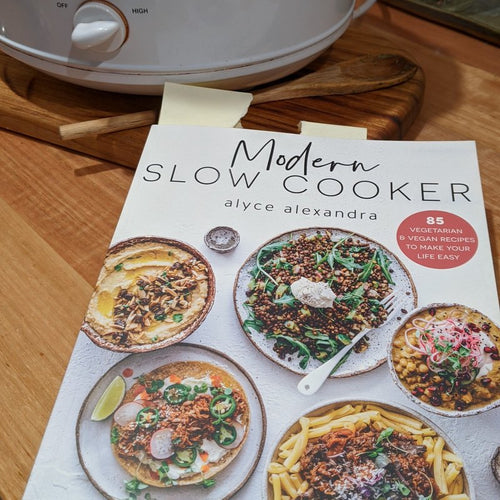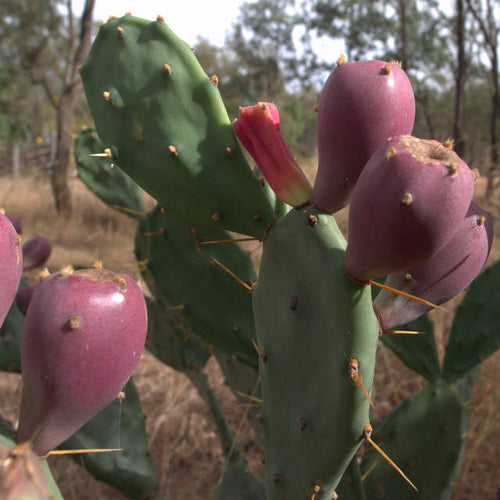After finding the Introduction and "Mastering the Basics" chapters of Nourishing Traditions extremely valuable, and having implemented many of the ideas in our everyday meals, the next chapters on "Great Beginnings", "The Main Course", "A Catalogue of Vegetables" and "Luncheons and Supper Foods", have been less relevant.
See more posts on Eight Acres about Nourishing Traditions here.
There are a few recipes that I've tried and a few more that I want to try, but on the whole, I haven't needed these chapters as I've just adapted my own recipes to incorporate the recommendations in the first two chapters. It is worth writing a brief summary of the useful and interesting bits of each chapter, as some people may benefit from an overview more than I did, and then I will get to the more interesting chapters in another post.
Nourishing Traditions - Great Beginnings
I haven't actually used any of these recipes, but I have adapted my own dip recipes! See my Macadamia Pesto and Sprouted Hummus
here, and Guacamole, Herb and Cream Cheese, and Tatziki, and I made some Babaganosh the other day, which I haven't posted about, but it was very easy, recipe
here.
Again, I haven't used any of these recipes because my salad recipe is: pick anything ripe in the garden, slice appropriately and arrange half on each plate :)
I love soup! I like to use up excess veges in soup, so its usually pumpkin and tomato. I'm looking forward to having some root veges to use up this winter, so I'll be trying some recipes then. Also I've found that using the real stock makes some delicious soup. I based this year's Pea and Ham soup on the Lentil soup recipe in this chapter.
Not yet!! Not sure if I'm comfortable with these at the current time!
Haven't tried any of these either (but only because I've had no need to).
Nourishing Traditions - The Main Course
We usually eat fish either baked or pan fried, with a butter/cream/lemon/herb sauce, but we don't eat fish very often at the moment because its really hard to get nice fresh fish in the South Burnett. When we get the aquaponics system working we will be growing our own fish and no doubt I will be looking for some more recipes to try! I think this chapter is aimed at people who don't know what to do with fish at all.

We've been eating our own homegrown roosters for a while now, so we have a series of recipes that work for us. First night is roast chicken with gravy, followed by either chicken for lunch (sandwiches, or small meals with chicken meat, veges and gravy) or chicken fried rice, or chicken pasta bake. As fried rice and pasta bake aren't really good foods (will explain more when I get up to the chapter on grains), I should be using this chapter to find a better alternative. We only eat chicken about once a month, and the last one was so tough I made Coq au Vin in the slow cooker, so I haven't tried any of these recipes yet.
I haven't tried these recipes yet, but when we have our next beast butchered, I will be keeping the organ meats for us to try (instead of feeding them to the dogs). Emma from Craving Fresh wrote a
good post about using organ meats.
We don't have access to any game meat, but with the new property it will be much easier for us to get a gun licence, so maybe we will be eating some game! The recipes in this book are really only for venison and wild birds, which we don't find around here. I'm sure that the notes about improved nutrition from game meat apply to all wild animals though and we have plenty of rabbits.
Not just any old beef and lamb, this chapter calls for pasture fed animals only, and I quite agree that animals raised on pasture are healthier and their meat more nutritious than animals raised in an unnatural environment of a feed lot (where they stand in small dirt pens and stuff themselves full of grain + antibiotics to stop them getting acidosis, this is not normal!).
The recipes describe how to use both the tender cuts, which can be cooked quickly and the tougher cuts, which must be cooked for longer, more slowly, to tenderise the meat. We have had to learn this one ourselves, as when we have a beast cut up, we get every possible cut of meat, and we don't want to waste any of it.
Our slow cooker has been a fantastic investment and many many tough cuts of meat have been turned into delicious winter stews and pot roasts. I haven't followed any of these recipes directly, most of my slow cooking involves onion, garlic, stock, wine, herbs and the meat, sometimes tomatoes and any veges that need using up. It always comes out different, but always tasty! For the tender cuts, we just cook them quickly on the BBQ or on the woodstove. We very rarely eat lamb because we have so much beef. If we go out for dinner I always order lamb, it reminds me of my childhood in NZ :)

We usually end up with 20-30 kg of beef mince every time we have a beast butchered, so we've got to love it! We also make old chickens into mince as they are too tough otherwise. Again, we haven't used any of the specific recipes in this chapter, but many of our favourites have been altered to align with Nourishing Traditions's principles, especially using real stock in the sauces. Our typical mince recipes are: hamburgers, meat loaf, bolagnaise sauce, chow mien, rissoles and burittos.
You will notice that there are no "main course" recipes for pork or vegetables. In the first chapter, it was mentioned that pork wasn't good for humans and has therefore been disregarded throughout the book. This is one point that I have chosen to ignore, no way I'll be passing on bacon, ham or pork chops! See here for some old-time pig wisdom from Agrarian Nation. As for vegetables, there is an entire chapter just for vegetables, and later in the book there's more about pulses and grains.
Nourishing Traditions - A Catalogue of Vegetables
This chapter literally lists all possible vegetables with different ideas on how to cook then. While it is recommended to eat most vegetables raw, apparently cabbage/kale/broccoli contain chemicals that block thyroid hormones and silverbeet contains oxalic acid, so are best eaten cooked (which rules out coleslaw on an all but occasional basis). A great suggestion in this chapter is to butter cooked veges, I hadn't done this for so long, I forgot how delicious it is, we now often have butter on the table with cooked veges!
This is probably a useful chapter for those who are unsure how to cook some veges. We don't mind having things the same every night, so we generally boil potatoes and steam the other veges in a steamer pot above the potato pot. Or cook them quickly in butter. Unless we are having a sauce or stirfry in which the veges are cooked anyway.
Nourishing Traditions - Luncheons and Supper Foods
Really I don't know how this chapter differs from the salads chapter - make a salad and have some meat with it, not hard!
Recipes for Mexican food which I think will be interesting. Unfortunately the tortillas are to be bought rather than made. Lucky Emma from Craving Fresh has
posted a tortilla recipe (which I use regularly, its so easy!).
Seriously, who doesn't know how to cook eggs??
Use your imagination.....
Have you read Nourishing Traditions? Do you use the recipes?
Here's the rest of the series:






















Leave a comment